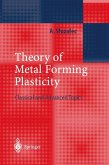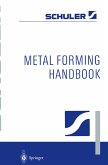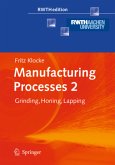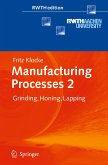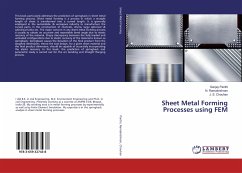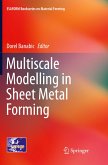The book gives a synthetic presentation of the research performed in the field of sheet metal forming simulation during more than twenty years by the members of three teams: the Research Centre on Sheet Metal Forming - CERTETA (Technical University of Cluj-Napoca, Romania); AUTOFORM software-house company from Zürich, Switzerland and VOLVO automotive company from Sweden.
The first chapter reminds some fundamental topics of the theory of plasticity. A more extended chapter is devoted to the presentation of the phenomenological yield criteria, emphasizing the formulations proposed by the CERTETA team (BBC models). The sheet metal formability is discussed in a separate chapter. After presenting the methods used for the formability assessment, the discussion focuses on the forming limit curves. In this context, the authors emphasize their contributions to the mathematical modeling of forming limit curves. The aspects related to the implementation of the constitutive models in finite-element codes are discussed in the last chapter of the book. The performances of the models are proved by the numerical simulation of various sheet metal forming processes: hydroforming, deep-drawing and forming of the complex parts. The book is useful for the students, doctoral fellows, researchers and engineers who are mainly interested in the mechanical modeling and numerical simulation of sheet metal forming processes.
Modeling and numerical simulation of sheet metal forming processes.
The concept of virtual manufacturing has been developed in order to increase the industrial performances, being one of the most ef cient ways of reducing the m- ufacturing times and improving the quality of the products. Numerical simulation of metal forming processes, as a component of the virtual manufacturing process, has a very important contribution to the reduction of the lead time. The nite element method is currently the most widely used numerical procedure for s- ulating sheet metal forming processes. The accuracy of the simulation programs used in industry is in uenced by the constitutive models and the forming limit curves models incorporated in their structure. From the above discussion, we can distinguish a very strong connection between virtual manufacturing as a general concept, ?nite element method as a numerical analysis instrument and constitutive laws,aswellas forming limit curves as a speci city of the sheet metal forming processes. Consequently, the material modeling is strategic when models of reality have to be built. The book gives a synthetic presentation of the research performed in the eld of sheet metal forming simulation during more than 20 years by the members of three international teams: the Research Centre on Sheet Metal Forming-CERTETA (Technical University of Cluj-Napoca, Romania); AutoForm Company from Zürich, Switzerland and VOLVO automotive company from Sweden. The rst chapter presents an overview of different Finite Element (FE) formu- tions used for sheet metal forming simulation, now and in the past.
Hinweis: Dieser Artikel kann nur an eine deutsche Lieferadresse ausgeliefert werden.
The first chapter reminds some fundamental topics of the theory of plasticity. A more extended chapter is devoted to the presentation of the phenomenological yield criteria, emphasizing the formulations proposed by the CERTETA team (BBC models). The sheet metal formability is discussed in a separate chapter. After presenting the methods used for the formability assessment, the discussion focuses on the forming limit curves. In this context, the authors emphasize their contributions to the mathematical modeling of forming limit curves. The aspects related to the implementation of the constitutive models in finite-element codes are discussed in the last chapter of the book. The performances of the models are proved by the numerical simulation of various sheet metal forming processes: hydroforming, deep-drawing and forming of the complex parts. The book is useful for the students, doctoral fellows, researchers and engineers who are mainly interested in the mechanical modeling and numerical simulation of sheet metal forming processes.
Modeling and numerical simulation of sheet metal forming processes.
The concept of virtual manufacturing has been developed in order to increase the industrial performances, being one of the most ef cient ways of reducing the m- ufacturing times and improving the quality of the products. Numerical simulation of metal forming processes, as a component of the virtual manufacturing process, has a very important contribution to the reduction of the lead time. The nite element method is currently the most widely used numerical procedure for s- ulating sheet metal forming processes. The accuracy of the simulation programs used in industry is in uenced by the constitutive models and the forming limit curves models incorporated in their structure. From the above discussion, we can distinguish a very strong connection between virtual manufacturing as a general concept, ?nite element method as a numerical analysis instrument and constitutive laws,aswellas forming limit curves as a speci city of the sheet metal forming processes. Consequently, the material modeling is strategic when models of reality have to be built. The book gives a synthetic presentation of the research performed in the eld of sheet metal forming simulation during more than 20 years by the members of three international teams: the Research Centre on Sheet Metal Forming-CERTETA (Technical University of Cluj-Napoca, Romania); AutoForm Company from Zürich, Switzerland and VOLVO automotive company from Sweden. The rst chapter presents an overview of different Finite Element (FE) formu- tions used for sheet metal forming simulation, now and in the past.
Hinweis: Dieser Artikel kann nur an eine deutsche Lieferadresse ausgeliefert werden.


